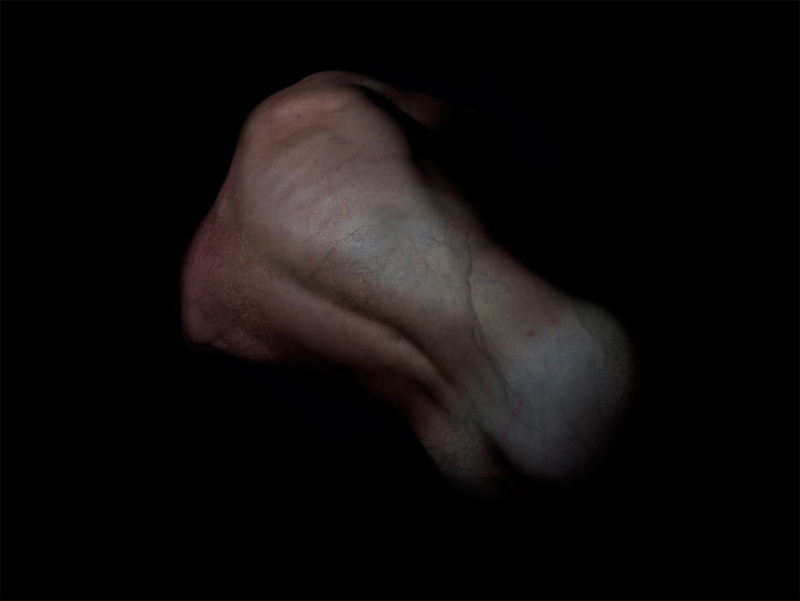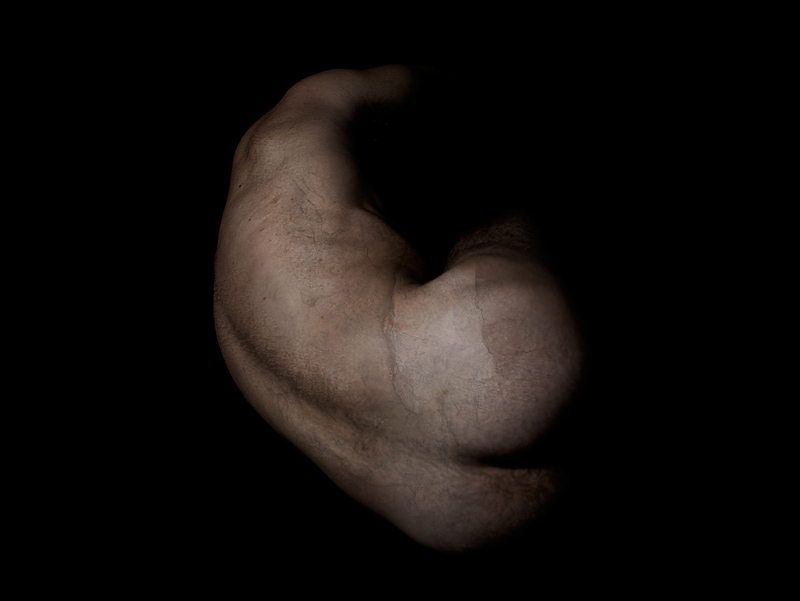Nir Arieli
Tension
"I can’t dance. I can’t in my room, nor in a
club, let alone any kind of stage. Whenever I am forced to try, I stumble or freeze
or drink enough to disappear. However, this time, for the first time, I found
myself actively involved in dancing - even if by using someone else’s body.
In my project I function as a visual choreographer,
making up a certain movement language that is the outcome of a verbal dialogue
between the photographed dancer and I. On my part, it is a language born of a
screech, it is uncomfortably beautiful.
I don’t predetermine the result - insisting on
well-planned perfectness - but rather establish a strong understanding, let the
dancer improvise and capture his movements. Afterwards, I experiment with
layering various photos on top of each other, searching for intriguing
combinations. Unlike everything I had done in the past, which was always
carefully sculpted, this time I put my trust in the coincidental.
My subjects provided me with the physical
intelligence. I only had vague mental images, a camera, and a long history of
unused dancefloors."



Max De Esteban
Elegies Of Manumission
Elegy III - On the Uncertainty of Being
If years ago made sense to express the dominant
anguish and distress through the representation of the diversity of the
identical, the anxiety of nothingness, the repression of emotion and
youth as integrated citizens; not anymore.



Marlous Van Der Sloot
"In the modern society we often want to forget that 'the physical' is also a source of information. Because of rationalisation, we turned away from our 'ordinary' world, convinced that our senses do not learn us anything valuable. But we cannot ignore
our body and look at it as a 'lifeless bag of cells'. We don't just have a body, we are a body. Forgetting this gives us the same feeling as a sleeping arm. In this condition your limb is biological still yours, but you do not experience it as yours.
It seems the arm of a stranger...
The alienation of our body is the theme of my work. My aim is to create images
which raise physical awareness"
our body and look at it as a 'lifeless bag of cells'. We don't just have a body, we are a body. Forgetting this gives us the same feeling as a sleeping arm. In this condition your limb is biological still yours, but you do not experience it as yours.
It seems the arm of a stranger...
The alienation of our body is the theme of my work. My aim is to create images
which raise physical awareness"




Giuseppe Santagata
Viscera
"I
use self-representation as an intimate and introspective investigation,
transforming every self-portrait into a metaphysical manifesto.
Like Narcissus in front of the mirror, I reproduce the image of
myself, making my body the subject and the object of my research.
Through this, vulnerability is revealed in its natural state, as if it
were a dimension of a body that, in the face of constant social
aggression, isolates itself.
An altered human anatomy, which is, at times, unrecognizable,
becomes a shapeless mass. Hybrid viscera, solitary and fragile, in an
intimate metamorphosis towards death."



Rosy Martin
Phototherapy dealing with aging
"In the everyday world most people
deal with the parts of themselves that they cannot face by psychically
splitting these off and projecting them out onto others. We are all
exposed to an endless stream of images in the media, chosen to confront
or seduce our gaze, to elicit feelings of horror, fear, grief, loss,
desire, pleasure, envy, inadequacy, joy and catharsis. Turn on the
television for the news: another disaster, another starving child,
followed by the adverts peopled by beautiful women, handsome men, happy
families all orchestrated around desirable objects, then the soap opera,
the police drama, the sit-com, the horror movie; we are offered an
endless flow of visual stories in which archetypes and stereotypes play
out our unconscious dramas. But within this hegemony only the dominant
cultural stories are regularly told--so much remains unsaid, and unseen."


No comments:
Post a Comment
Note: only a member of this blog may post a comment.